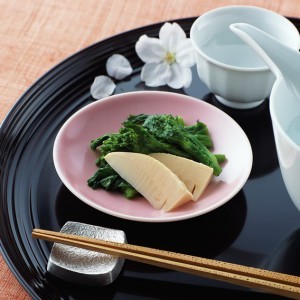
The Japanese diet is a low-carb and low-calorie diet developed by a Japanese nutritionist, whose protein menu allows you to lose about 10 kilograms in 2 weeks.
Being overweight nowadays many people call for payment for a very fast lifestyle. We are in a hurry to live, we are in a hurry to work, we are in a hurry to eat. . . Moreover, we often eat on the go and with what, as they say, God will send. And in the 21st century, God is increasingly sending us hamburgers, hot dogs, cheese burgers and sodas. . . "What to do? Do not waste precious minutes for lunch in a restaurant or what? ! - to cook yourself in the kitchen when the business" burns "? ! Here, they say, the whole world succeeds in living like this and there is nothing-what. "This reason is used by a large proportion of people who lead an active lifestyle. And when your favorite jeans do not fit, when you should buy a longer belt, when between the tempting skirt that fits the waist and the ugly shapeless style with elastic straps, we choose the latter, then, of course, has arrivedtime to present new reasons. In fact, all of this, of course, is not the result of improper nutrition, but only. . . thick bones. Yes, yes, and there is nothing to do about it, thick bones - really, very dangerous. And once it grows - everything, it is impossible to stop it.
Now let us turn our attention to Japan, a country with great opportunities, the highest level of technological development and incredible speed of life. It seems that if one does not have time to stop for a moment to eat right, it is the same as the Japanese. But, surprisingly, you rarely meet the "thick" among the Japanese population. . . So what is the secret?
The fact of the matter is that Japanese snacks are low in calories, rich in protein, almost lean and "bad" carbohydrates. And the main principle of the Eastern food tradition is simplicity. That is why Japanese cuisine is said to be one of the healthiest foods for the body.
Taking into account the uniqueness of the Eastern dietary tradition, a balanced and highly effective diet called Japan is made. Actually, there is no food from traditional Japanese cuisine on this diet menu. But there is much more to the combination of proteins, fats and carbohydrates, in the amount needed just for the body to receive everything it needs without provoking, at the same time, “thickening” of the bones. There are several diet options, but the most popular is the 14-day Japanese salt-free diet. Two weeks of proper "Japanese" diet will help "thick bones" lose more than 10 kilos and maintain results easily for several years.
The essence of the Japanese diet
Those who decide to use the "Japanese" language should be patient and stay away from the usual way of eating for two weeks. For many, diet may seem like a daunting challenge, but the effect will not be long. But the remarkable results will remain there for several years. Only a two-week “Japanese woman” regime - and ten pounds (sometimes more - it all depends on the initial weight), as before.
So what is the main secret? Why is a Japanese diet for a week better than other weight loss diets? What is the best way to lose weight even for those who have tried many other diets in vain?
This is all about carefully selected products for the diet menu - they are combined in such a way as to speed up the metabolic process as much as possible. Therefore, it is very important to strictly adhere to all instructions, only the food shown, not to "improve" the rest of the product, although at first glance it may seem interchangeable. Also not recommended to change the menu day.
For many women, when choosing their food, their level of "hunger" is important, because not everyone can fight the will of the samurai to fight against their own desires, especially the old instinct of all living beings - hunger. This is why the fact that a two-week diet without Japanese salt is not a "hungry" diet. Accordingly, you do not have to chew a cabbage for weeks and drink low-fat kefir, gossip, overweight and those on a diet. The Japanese women's menu contains places for interesting and delicious recipes. This food is very attractive for those whose breakfast consists only of coffee. And meat and fish lovers will not see anything difficult in it. This is the best diet for them.
The essence of the Japanese diet is easily explained in just two words - slowness and efficiency.
"Japanese" is a low-calorie fiber protein diet. Carbohydrates, which are reduced to a minimum in the daily diet, force you to lose weight faster - needing energy, the body begins to process its own fat storage into joules. But it is important to remember another thing: the diet of a Japanese woman will not let the body saturate with the whole spectrum of vitamins and minerals. Therefore, it is strictly forbidden to go on a diet longer than prescribed (not more than 14 days), so as not to complete the course of weight loss in hospital beds.
And if you want to feel like a real Japanese, you can try Japanese sticks instead of traditional forks and spoons for Europeans. They will not only convey the spirit of the incredible Rising Sun, but also teach how to eat slowly and in small pieces. By the way, this trick is known to many diet advocates. Relaxing food can deceive the body and make you feel full even after eating very little. This should actually be taught by the Japanese to lose weight.
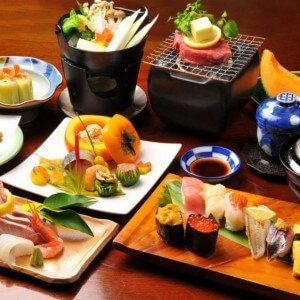
Japanese Diet Types
The popularity of the Japanese diet among women around the world has led to the emergence of several options for this system for weight loss. In particular, known dietary choices:
- Japanese noodle food for 7 days;
- for 13 days (most commonly used diet);
- for 14 days (as opposed to the previous 13 days diet, with only one day);
- Japanese woman with green tea;
- Diet Naomi Moriyama.
Proponents of each of these techniques call their favorite variants "real" Japanese women. Moreover, many mines have been violated in disputes over dietary authorship. Some argue that Japanese nutritionists invented it, others argue that this system has nothing to do with the East. Whoever is the author of the Japanese diet, the main thing is that it works. And its effectiveness has been experienced by millions of donuts all over the planet.
The Japanese diet menu for weight loss consists of foods with minimal calorie content, carbohydrates and without salt, spices, sugars and sweets, as well as any alcohol, therefore diet is considered strict. This contributes to the rapid breakdown of fat in the body, as the body is in a state of stress and has to burn its own fat and calories.
7-day diet menu
The 7-day Japanese diet is a lighter version of the traditional Japanese diet, but at the same time, the 7-day diet is the basis of the whole diet.
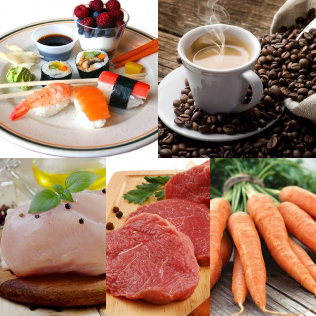
Forecast results: Only 3-5 kilograms left in the past.
Disadvantages: longevity results are not guaranteed, because the body has not had time to adapt to the new metabolic system.
Day 1
Calorie content in daily diet: 700 kcal.
Product Required:
- black coffee;
- chicken eggs;
- fresh cabbage (Peking cabbage / white cabbage);
- tomato juice (ideally freshly squeezed);
- low fat fish.
Breakfast:
- black coffee - it is better to give preference to espresso, but it is better to forget sugar.
Lunch:
- boiled chicken eggs (2 pieces can);
- "Japanese" salad - fresh cabbage and a little vegetable oil, no need to add salt;
- a glass of tomato juice.
Dinner:
- steamed fish - hake, cod, pollock are ideal (portions not more than 200 grams);
- Japanese Salad.
Day 2
Calorie content in daily diet: 1000 kcal.
Product Required:
- kopi;
- ribs;
- fish (fat type);
- cabbage;
- vegetable oil;
- beef;
- kefir.
Breakfast:
- kopi;
- ribs - take a small one, weighing about 30 grams.
Lunch:
- fish, fried or boiled - for variety and use of extra fatty acids, you better choose catfish, salmon, black halibut. In total, no more than 150 grams;
- "Japanese" salad.
Dinner:
- beef - boil about 200 grams. Eat without salt;
- kefir - you can use a scheme, but no more than a 200 gram glass.
Day 3
Calorie content in daily diet: 1000 kcal.
Product Required:
- kopi;
- courgette / parsnip;
- apple;
- chicken eggs;
- beef;
- cabbage;
- vegetable oil.
Breakfast:
- black coffee - don't forget the sugar moratorium.
Lunch:
- zucchini (large enough) or parsnip root (also large) - chocolate in vegetable oil (do not use flour or batter for frying, salt is also prohibited);
- apples - do not get carried away, it is recommended to limit one fruit.
Dinner:
- boiled chicken eggs - 2 pieces;
- boiled beef - limit appetite to 200 grams of salt-prepared pieces;
- "Japanese" salad.
Day 4
Calorie content in daily diet: 1000 kcal.
Product Required:
- kopi;
- carrots;
- hard cheese;
- chicken eggs;
- apple.
Breakfast:
- black sugar-free coffee.
Lunch:
- carrot - boiled, it is allowed to take 3 larger roots;
- some cheese - choose from hard type, limit yourself to 20 grams;
- raw chicken eggs - one is enough.
All 4 day lunch ingredients, if desired, can be combined into one dish - salad.
Dinner:
- apples - some are allowed.
At this point, hunger will not be as strong as before. Fullness comes after a small meal.
Day 5
Calorie content in daily diet: 800-1000 kcal.
Product Required:
- carrots;
- lemon juice;
- sea fish;
- jus;
- fruits.
Breakfast:
- carrots and lemon juice - grated vegetables and season with juice. You can not add sugar. Also excluded today from breakfast and coffee.
Lunch:
- fried fish - take about 350-400 grams, variety - any sea;
- tomato juice - for diet, it is more accurate if you use freshly prepared food yourself. Volume - no more than 200 grams.
Dinner:
- fruit - but you should not take it, especially before bed, grapes of various kinds, or bananas. They will surpass all the results achieved so far.
Day 6
Calorie content in daily diet: 900-1100 kcal.
Product Required:
- kopi;
- chicken fillet;
- raw cabbage;
- carrots;
- vegetable oil;
- chicken eggs.
Breakfast:
- black sugar-free coffee.
Lunch:
- chicken fillets - limit portions to 500 g, take skinless meat. Boil in water without adding salt;
- salad - today, traditional "Japanese" salads can be improved by adding grated raw carrots.
Dinner:
- chicken eggs - boil 2 pieces;
- carrots (you can take a large one) - grate raw vegetables, season with salad with a little vegetable oil (maybe olive oil).
Day 7
Calorie content in daily diet: 700-800 kcal.
Product Required:
- teh;
- fruit;
- beef;
- eggs;
- cabbage;
- vegetable oil.
Breakfast:
- tea - it is recommended to choose a good green type, rich in beneficial antioxidants.
Lunch:
- beef - boil a piece of 200 grams. Do not use salt or other spices during cooking;
- fruit - on the last day of the diet, you can enjoy lunch dessert. But do not forget about the ban on the use of bananas and grapes.
Dinner:
On this day for dinner, as a gift for endurance, you can choose any dinner option from the previous days. For example, choose a version of beef, eggs and cabbage salad seasoned with olive oil.
This will end the diet for some people. For those who have opted for the older Japanese women’s version, the 7th day is just the equator to change themselves.
For those who are not accustomed to eating by counting calories, "Japanese" at first may seem like a rather difficult option to lose weight. But the discomfort can only be seen in the first few days - then the body adapts to the small portions of food, starting to eat faster. After 5 days of a new diet in the body, the first stage of restructuring begins to accelerate metabolism - the main purpose of any diet is to lose excess weight, excess fluid is removed, edema disappears. To achieve the best results in line with your diet, you can follow an anti-cellulite massage.
Japanese diet for 13 days
The 13 Day Japanese Diet is the most popular. This version is considered a complete weight loss course.
Prediction results. If you are ashamed to adhere to all prescriptions, by the end of 13 days, you will lose about 10 kilograms and a volume of about 30 cm (sometimes more).
How is it different from the 7 day option? In fact, this is a continuation of the lightweight version of "Japanese women". That is, you have to go through 7 days of "Japanese" life, and on the 8th day start again, repeating the days from the first to the sixth.
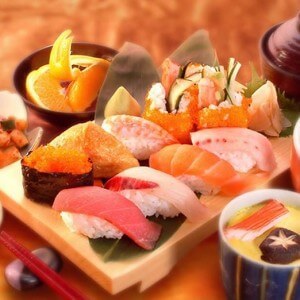
Japanese Diet for 14 days
The policy for the Japanese diet of the 14-day version is also a 7-day menu, albeit with a few nuances. The main difference from the previous two options is that in the first week you have to adhere to the 7-day menu, and the second week to eat according to the same program, but in the opposite order. This means that the eighth day diet will correspond to the diet on the last day of the 7-day, on the ninth day - the 6th day menu, on the tenth day - the 5th day menu. . . And according to this principle, continue until the end of the fortnight. As a result, complete the last 14 days of the diet with the first day of the 7-day "Japanese women's" version of the diet.
Starting from the 8th day of nutrition, the detoxification process is activated in the body, and due to the principle of salt-free diet, excess fluid is released at the interstitial level, completely eliminating edema. It is important that in the second week of the diet the body is accustomed to a new metabolic rate. Thanks to this, even after switching to a regular diet (normal - this does not mean eating again in the basin for the next sleep, but you also do not have to live in "hungry" mode) the body will not gain weight, on the contrary - fat willburned as fast as during the diet. This wonderful effect will last for about 2 years. But provided the diet is taken care of properly. Those who have experienced the work of "Japanese women" claim that for a year after the diet is over, the weight continues to be adjusted downwards. If you repeat the "Japanese woman" again (but not earlier than six months after the first course), then in a year, practically without effort, it is very possible to lose 20 kg of excess weight.
Diet and salt
Have you ever wondered why almost every less effective diet includes a salt taboo? The problem is, according to experts,
1 gram of salt stores a whole liter of fluid in the body.
And this is no more than a kilogram for overweight. In addition to the wrong weight gain, due to the blessings of salt, the accumulated weight is not due to the fat layer, but due to fluid stagnation, excessive salt consumption poses another problem for humans. Even a few days of food without salt can lower blood cholesterol levels and improve the condition of blood vessels.
Of course, it is impossible to completely remove salt from use, and it is impossible. But the "Japanese women" menu contains products that already contain a certain amount of salt - enough for normal organ function. Especially organic salt is found in some vegetables, fish, meat. It is impossible to eat canned vegetables, smoked meats, semi-finished products during the diet - they all contain table salt in their composition.
Green tea
In addition to the classic version of the Japanese diet, there are also options in the menu which in addition to coffee, it is recommended to use green tea. Many nutritionists consider this variation of "Japanese women" more beneficial for the body.
Given that the Japanese diet is based on a protein diet, it is important that green tea (especially its Japanese form) contains a lot of protein, and in terms of nutritional value, this drink is not inferior to legumes.
The second addition in favor of green tea is the presence of antioxidant composition that protects the body from toxins and encourages the elimination of toxins.
Third, and this is probably the most important for those who lose weight, the unique chemical composition of green tea helps speed up metabolism by 4 percent (60 calories burned per day more than without green tea).
The Japanese Green Tea Diet lasts for 2 weeks. The components are very similar to the classic "Japanese" version, although there are still some excellent features.
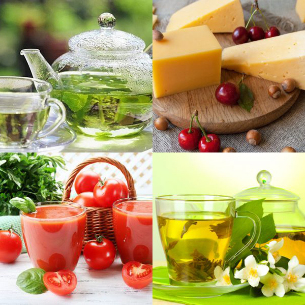
Detailed Japanese Green Tea Diet Menu
Day 1 / Day 14
Breakfast:
- green tea - glasses;
- fat-free cottage cheese - 150 g.
Lunch:
- cabbage, boiled with butter - 300 g;
- boiled chicken eggs - 2 seeds. ;
- fresh apples - glasses.
Dinner:
- vegetables in salads or steamed;
- boiled or steamed fish - 200 g.
Day 2 / Day 13
Breakfast:
- green tea - glasses;
- hard cheese - 2 pieces;
- toast or diet biscuits.
Lunch:
- boiled or raw cabbage, seasoned with oil;
- boiled fish;
- green tea - glasses.
Dinner:
- vegetable salad;
- boiled beef - 300 g;
- boiled chicken eggs - 2 seeds. ;
- Japanese green tea - glass.
Day 3 / Day 12
Breakfast:
- Japanese green tea - glass;
- cookie diet.
Lunch:
- boiled zucchini / cauliflower;
- apple - 1 pc. ;
- green tea - glasses.
Dinner:
- yellow-green vegetable salad;
- boiled beef;
- boiled chicken eggs - 2 pieces.
Day 4 / Day 11
Breakfast:
- Japanese green tea - glass;
- fat-free cottage cheese - 150 g.
Lunch:
- grated carrots with olive oil;
- chicken eggs;
- green tea without sugar.
Dinner:
- green tea;
- fruits (not grapes and bananas).
Day 5 / Day 10
Breakfast:
- green tea - glasses;
- croutons with jam - 2 pieces.
Lunch:
- boiled fish - 200 g;
- tomato juice - glass.
Dinner:
- green vegetable salad;
- hard cheese - 2 pieces;
- green tea - glasses.
Day 6 / Day 9
Breakfast:
- crouton rye flour - 2 seeds. ;
- Japanese green tea - glass.
Lunch:
- raw / boiled cabbage with olive oil;
- skinless boiled chicken - 400 g;
- Japanese tea - glasses.
Dinner:
- carrots (boiled / raw);
- boiled eggs - 2 seeds. ;
- green tea without sugar.
Day 7 / Day 8
Breakfast:
- Japanese tea - glasses;
- cheese (any kind of hard) - 2 small pieces.
Lunch:
- boiled beef - 200 g;
- boiled / steamed vegetables;
- green tea without sugar - glass.
Dinner:
- fruit - any;
- Japanese green tea - glass.
The effectiveness of this Japanese diet variant is enhanced by the addition of green tea to the diet, and the variety and deliciousness of the menu makes it easy to survive during food restrictions. Repeat the diet - no earlier than a year later. And that is achieved in two weeks the results remain longer, in the future it is recommended to adhere to a healthy lifestyle, eliminate tobacco and limit the share of alcohol, and observe proper nutrition in daily life.

Main course
Whatever Japanese diet you choose, one of them will have a traditional cabbage salad and boiled meat. This dish can be prepared in a variety of ways. But remember that they are part of the diet and the cooking process is a little different from cooking. regular food.
Make the Right Japanese Salad:
- Take raw or slightly cooked cabbage (regular cabbage or Peking cabbage).
- Cut finely.
- Removes excess moisture easily.
- Season the salad base prepared with olive or sesame oil.
- Stir and let it mix.
Boiled meat diet
- Prepare the meat. If it is chicken, remove the skin. Peel a beef or beef from the film.
- Rinse with cold water.
- Put the meat in a saucepan, cover with very cold water.
- After boiling, drain the water, rinse the meat and, again, fill with water, bake.
- Cook until tender without adding spices.
Tip: add onions, small carrots, and a little green to the water to enhance the flavor while cooking. Many people wonder how to replace beef in Japanese food. It is permissible to include young beef in the menu, which is easier to digest, but with the same chemical composition as beef.
How is the product selected?
Almost all sources say that the list of foods allowed during the Japanese diet is special and cannot be changed. So, what is the secret of this diet?

Coffee. Many people start their day with this aromatic drink. A cup of black powdered coffee serves as a traditional breakfast and Japanese food.
What's the point?
Black coffee without sugar, which has a refreshing effect, helps the body wake up faster and start the process of burning calories. And because food intake is not provided by the diet in the morning, the body begins to produce energy by burning its own storage - subcutaneous fat.
You can diversify the taste of your morning drink by adding vanilla, dark chocolate or citrus fruits. Add the additive in small doses.
Cabbage. These vegetables for the diet are not accidentally selected. In addition, cabbage is one of the vegetables with a "minus" calorie content (the body spends more energy for its digestion than it receives).
What's the point?
Cabbage, white cabbage or Peking, has a strengthening effect on the walls of blood vessels, lowers cholesterol levels, and cleanses the intestines. For people who are prone to intestinal infections, it is better to boil the cabbage a little before use.
Olive oil. One teaspoon of oil added to salads normalizes metabolism, has a beneficial effect on the liver, kidneys, and pancreas.
Eggs. This product has good nutrition and is an excellent source of protein, fat and carbohydrates, as well as many vitamins and minerals.
Tomato juice. Nutritionists call it one of the healthiest. The unique chemical composition of tomatoes can prevent cardiovascular and oncological diseases, accelerate metabolic processes in the body, improve mood and have a beneficial effect on the nervous system. It is well absorbed without added salt, which is very important for a salt-free diet.
Fish. Known for its ability to remove toxins and toxins quickly. It is a valuable source of protein and amino acids. It affects the body as a preventive measure against stroke.
Fruit. Usually, during the diet, the amount of carbohydrates consumed should be drastically reduced. But it is highly undesirable to exclude from the diet - they are an important source of energy. The body receives "correct" carbohydrates along with fruits. But from the diet it is better to exclude bananas and grapes, which contain a lot of sugar.

Diet Naomi Moriyama
It's hard not to believe in the effectiveness of the Japanese diet, especially for those who still decide to try it themselves. But sooner or later, many are asking the question: why is this diet called the "Japanese diet" if its practice is not on the menu? from traditional dishes to the Land of the Rising Sun. But there is an explanation for this. According to one version, this original diet is the development of the Japanese nutritionist clinic "Yaelo".
But there is another version of "Japan", created by marketer Naomi Moriyama - in response to French woman Mireille Guiliano, author of the book "Why French Women Are Not Fat. "world. The obese people live in Japan - only 3 percent, while in France there are about 11% donuts, and in the United States - more than 32%. So Naomi has put together a diet that is specific to her people and adapts to her diet.
Rules of food from the Land of the Rising Sun
Easterners eat nearly 100 different types of food each week, the number of calories higher than a quarter lower than, for example, the weekly calorie dose in America. The only secret to Japanese harmony lies in one simple rule: fill 80 percent.















































































